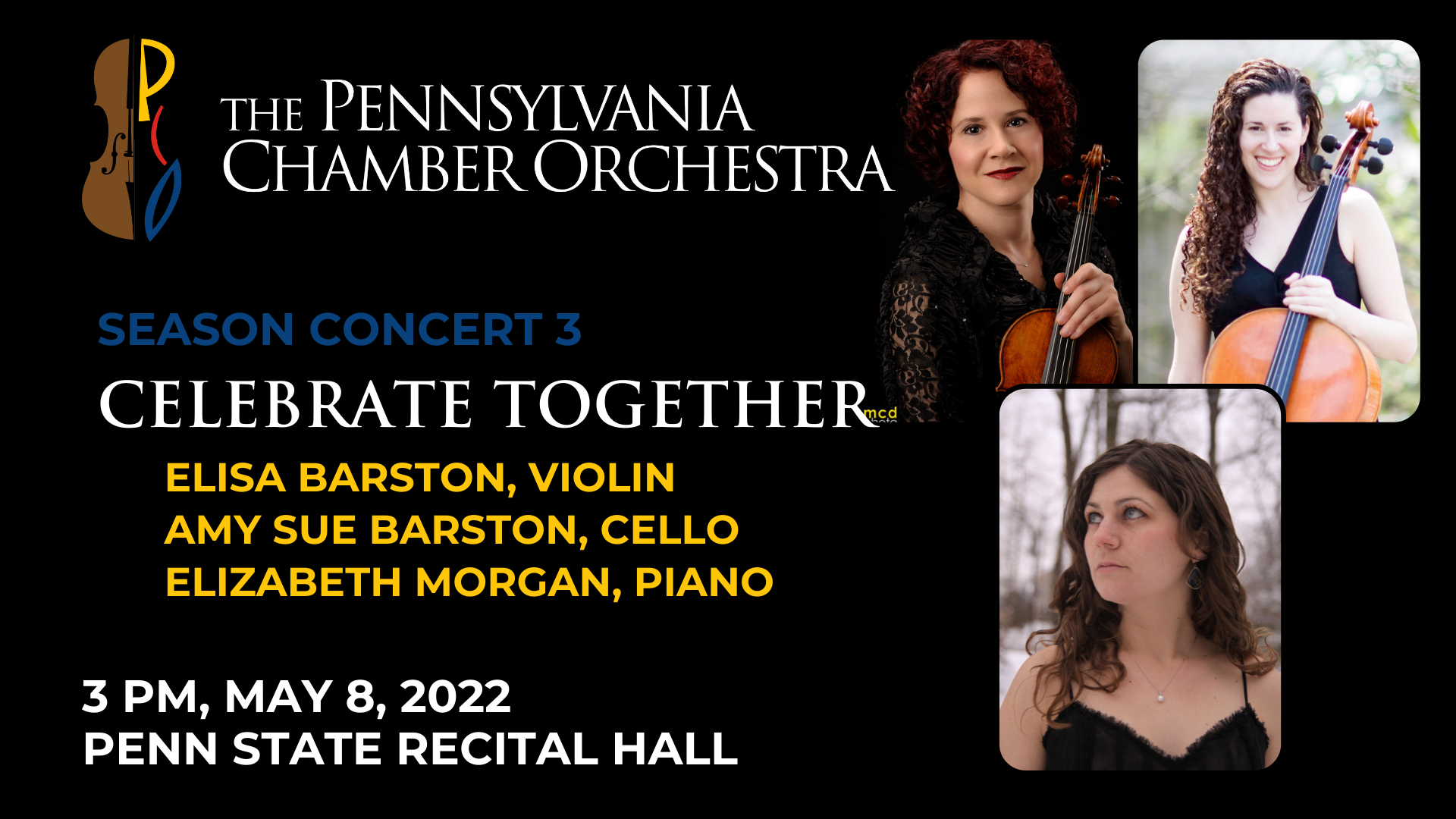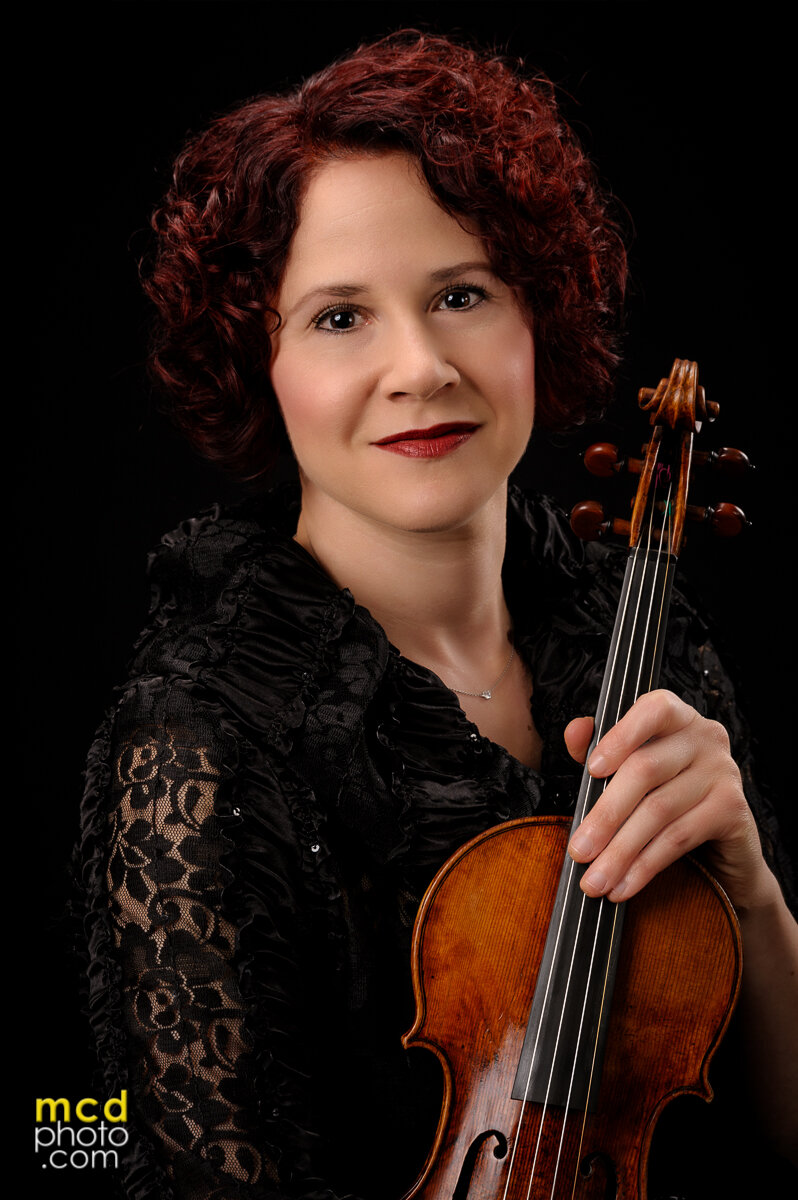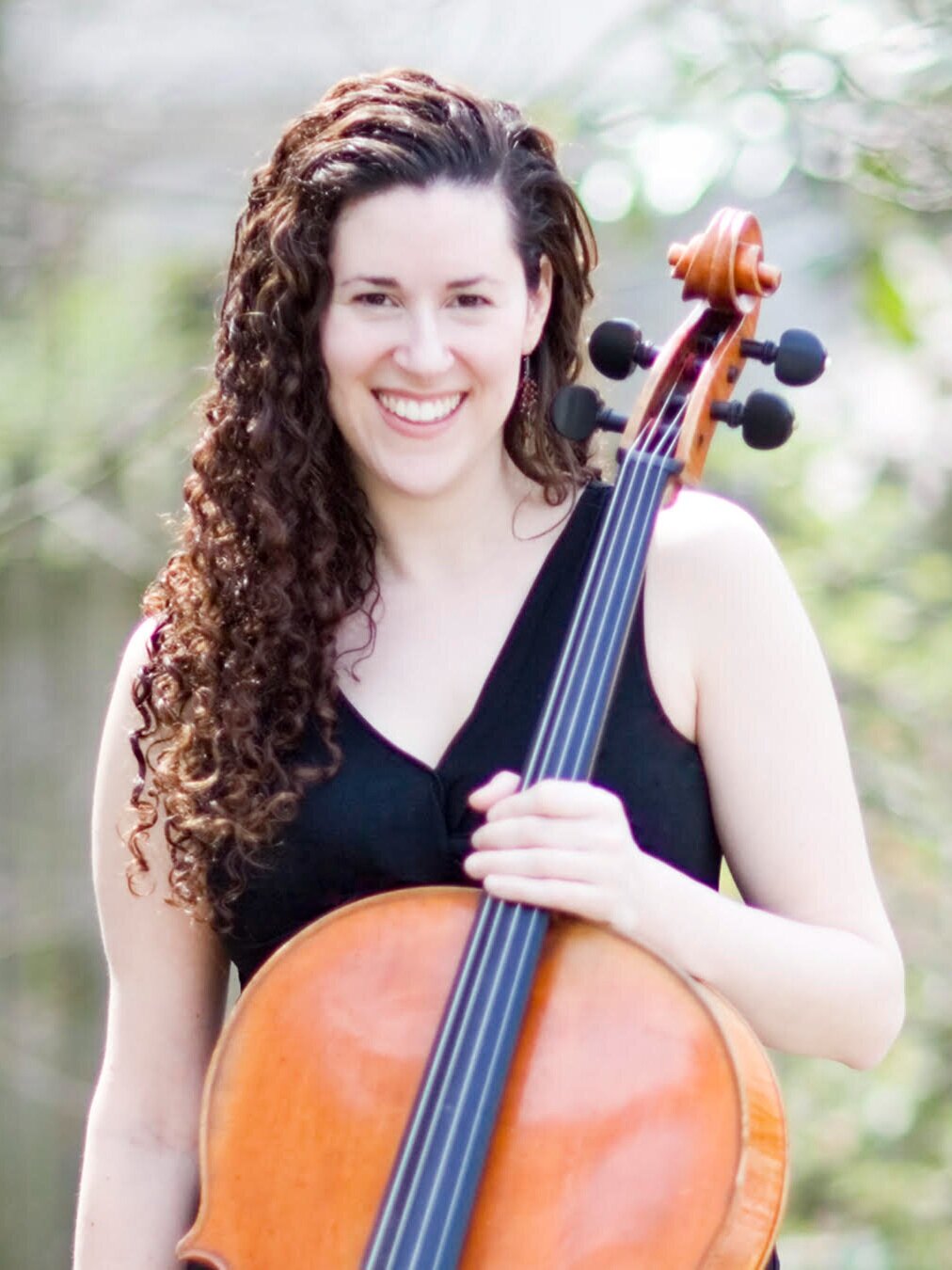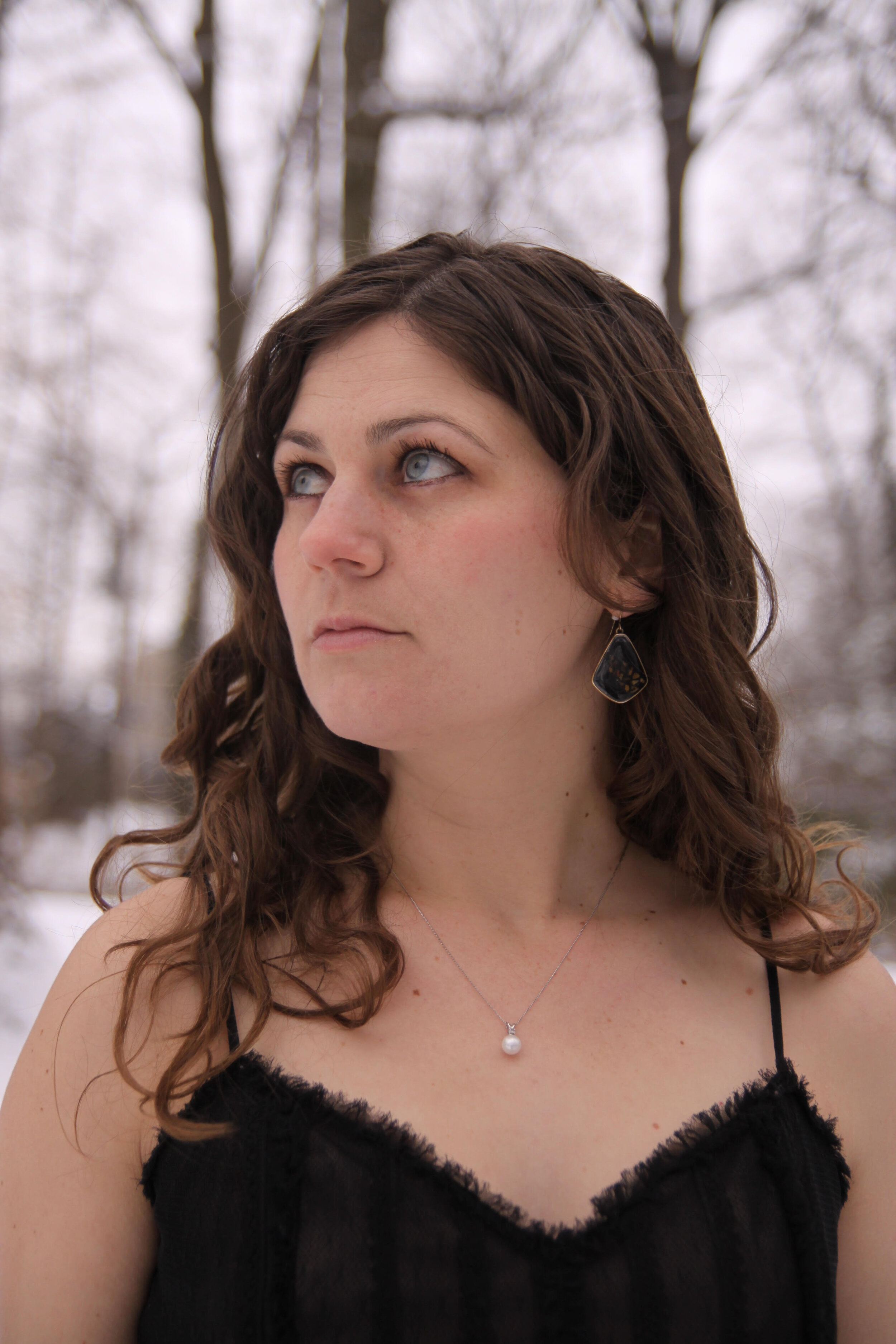Season Concert 3: Celebrate Together
Sunday, May 8, 3pm - Penn State Recital Hall
Ludwig van Beethoven - Concerto for Violin, Cello, and Piano in C major, Op. 56,
Ludwig van Beethoven - Symphony No. 7 in A major, Op. 92
Concert Sponsor: Nina & George Woskob
Guest Artist Sponsor: Happy Valley Adventure Bureau
Hear Maestro Attar talk about our season finale.
Program Notes
Triple Concerto:
Archduke Rudolph Johann Joseph Rainer, youngest son of Emperor Leopold II, and half-brother of Emperor Franz, was born January 8, 1788.
Like the other children of the Imperial family, Rudolph was instructed in music by Court Composer, Anton Teyber, and tradition says that as early as twelve or fourteen he played in the salons of his friends with credit to himself. In later years he gave ample proof of more than ordinary musical talent and taste; and as soon as he had liberty of choice he exchanged Teyber for Beethoven. From the writings of Ferdinand Ries (composer and Beethoven’s right hand man) and other sources, it seems probable that Beethoven undertook the role as Rudolph’s piano and music teacher in the winter of 1803–4.
It was Fräulein Giannatasio, an intimate of Beethoven who wrote “At that time Beethoven gave lessons to Archduke Rudolph, a half-brother of Emperor Franz. I once asked him if the Archduke played well. ‘When he is feeling just right,’ was the answer, accompanied by a smile. He also laughingly referred to the fact that he would sometimes hit him on the fingers…”
The Archduke continued his study with Beethoven intermittently over the next twenty years, making his own contribution to cultural life in his compositions and, above all, in his patronage and the very practical help he extended to his teacher, for whom he was instrumental in providing a pension from 1809.
Beethoven's Triple Concerto, op. 56 (1804), though dedicated to Prince Lobkowitz, was written, says Anton Schindler (Beethoven’s first biographer) for the Archduke Rudolph, Carl Seidler, and Anton Kraft. The work does not require great execution in the piano part, but a youth of sixteen able to play it would have to be a very respectable performer. The Triple Concerto was first heard under Lobkowitz auspices with Anton Wranitzky (violin), Anton Kraft (cello) and Beethoven (piano), privately in June, 1804, and publically in January, 1805.
It was primarily in the last thirty years of the eighteenth century that the symphonie concertante (an orchestral work, normally in several movements, in which one or more solo instruments contrast with the full orchestra) had won popularity, particularly in Paris. It was as a result of his visit to the city in 1778 that Mozart wrote his own four completed examples. Beethoven’s single contribution was this so-called Triple Concerto.
This music marks the beginning of the composer’s “Middle Period,” along with works like the “Waldstein” piano sonata and the “Eroica” Symphony No. 3. While expansive and imaginatively developed, the Triple Concerto is in most outward respects a conservative work. It is a jaunty and melodious piece for polite company. There is an almost Rococo character to the themes of the first movement, while the jovial concluding rondo is cast in the form of a courtly Polish dance, the polonaise.
Symphony No. 7:
Beethoven’s Seventh Symphony was the culmination of the big style he had been cultivating since the early 1800s. The concert at which the work had its premiere in the great hall of the University in Vienna on December 8, 1813, was a benefit for Austrian and Bavarian soldiers wounded at the recent Battle of Hanau. It was probably the most wildly successful of his career.
What caused the excitement was not, however, Opus 92, the new symphony, but Opus 91, Wellington’s Victory, or The Battle of Vitoria, originally written for a mechanical instrument called the Panharmonicon but presented at this, its first performance in the version for orchestra. (At Vitoria, in northeast Spain, an army of English, Spanish, and Portuguese troops under the Duke of Wellington defeated the French on June 21, 1813. In the battle of Hanau, that October, Napoleon thrashed the mostly Bavarian army that attempted to block his retreat toward the southwest.)
So great was the success that the entire program was repeated later in the month, again in January, 1814, and once more in February. To Beethoven’s annoyance, the critic of the Wiener Zeitung referred to the Seventh as having been composed “as a companion piece” to Wellington’s Victory. But the public liked the “companion piece” too, and the composer Louis Spohr, one of the violinists in the orchestra for the whole series of concerts, reports that the second movement was encored each time.
Following the premiere of the Seventh Symphony, Beethoven penned a letter to be printed in the Wiener Zeitung, though he seems not to have sent it. He began: “I esteem it to be my duty to thank all the honored participants in the concert given on December 8, and 12, for the benefit of the sick and wounded Austrian and Bavarian soldiers who fought in the battle at Hanau, for their demonstrated zeal on behalf of such a noble end. It was an unusual congregation of admirable artists wherein every individual was inspired by the single thought of contributing something by his art for the benefit of the fatherland, and who without consideration of their rank cooperated in subordinate places in the excellent execution of the whole.”
It was indeed “an unusual congregation of admirable artists.” Ignaz Schuppanzigh, Beethoven’s portly, long-suffering friend whose string quartet introduced all of the composer’s mature quartets, sat concertmaster, and the guitarist Mauro Giuliani played cello. The composers Giacomo Meyerbeer, Johann Nepomuk Hummel, and Ignaz Moscheles all helped out as percussionists in Wellington’s Victory, with Antonio Salieri (who served as secondary conductor) cuing them and the artillerists, who discharged firearms to lend authenticity to the battle scene.
Written in the standard four-movement form, Symphony No. 7 begins with a slow expanded introduction, which is followed by a Vivace in sonata form, in a dance-like triple meter. The second movement is in A minor based upon a stately Pavane rhythm, solemn and varied throughout the movement. The third movement, Presto, is almost like a rondo, with the A-B juxtaposition recurring several times (instead of the more usual A-B-A). The finale, Allegro con brio, is in an furiously energetic 2/4 meter, with a recurring emphasis on the second beat of the measure.
Beethoven’s rhythmic ingenuity is a pillar of this symphony. Many critics emphasized its wild energy in their writings. Richard Wagner wrote of this piece that “the Symphony is the Apotheosis of the Dance itself: it is Dance in its highest aspect, the loftiest deed of bodily motion, incorporated into an ideal mold of tone.”
This piece is scored for a typically “classical” orchestra, with pairs of woodwinds and brass; Beethoven’s writing for the horns is especially dramatic and dynamic. Overall, the rhythm of this symphony, its dance-like and sophisticated rhythms, and the famous second movement make it one of Beethoven’s most interesting and powerful symphonic works.
Program notes by Conductor Laureate, Douglas Meyer.








